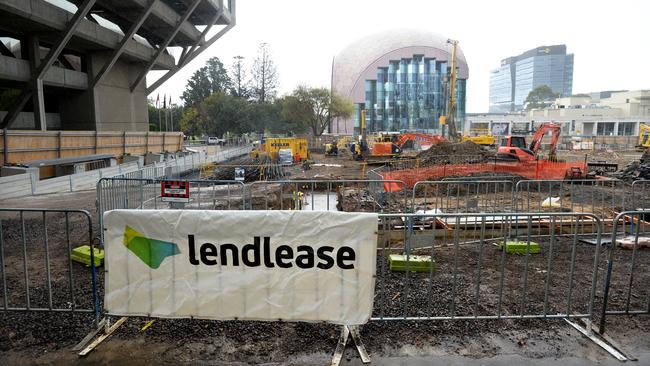Why companies are selling core assets as age of the corporate conglomerate draws to a close
Australian businesses are increasingly looking to offload non-core assets as the age of the corporate conglomerate draws to a close.

Australian businesses are increasingly looking to offload non-core assets as the age of the corporate conglomerate draws to a close. Just look at Lendlease’s decision to step back from its international construction businesses, or the trend of diversified miners offloading their coal businesses – it is clear divestment activity has never been more important to the deals market.
Two recent Deloitte reports capture this trend in action. One, Rebalance your portfolio to fuel growth, contains a survey of 250 executives of companies with at least $US1bn ($1.54bn) in revenue across the Asia-Pacific, including Australia. It found that 79 per cent planned to make at least two divestments within the next 18 months.
The second, our annual survey of 150 Australian M&A leaders, found that 33 per cent of respondents were most interested in deals concerning the divestment of non-core assets. That’s the second-highest number of leaders examining divestment opportunities in the survey’s seven-year history, the highest being in 2023.
What’s becoming apparent is that business believes shedding components of an organisation can be as important as acquiring new ones. What’s driving this interest in divestment? We see four key motivations.
The first is a trend towards more active portfolio management and a higher emphasis on capital efficiency. According to our survey of Asia-Pacific leaders, 59 per cent of corporates are now assessing their portfolio performance at least twice a year, up from 46 per cent in 2022.
This behaviour is a sensible reaction to the uncertain economic environment we find ourselves in. With interest rates looking as though they may stay higher for longer, divestiture is an easy way to pay down debts that have become more expensive to service over the past few years.
The pace of technological change has accelerated post-Covid, with technologies like AI disrupting industries and shifting the priorities of decision-makers.
The most common reasons for pursuing divestiture, according to Asia-Pacific leaders, include the target business no longer being core to the broader operation and a change in the competitive landscape of the market.
This all bleeds into the second motivation, which is that companies have worked out being divestment-ready can help them “manifest” the maximum value for any asset deemed not to be a good fit for their business.
Our survey found that deal-ready sellers – those that are ready and able to move fast – are three times more likely to exceed deal-value expectations. And when respondents who had made good recent divestment moves were asked for the most significant reasons for their companies receiving a higher than expected value, the top answer was “preparation and optimisation execution at the divested business prior to the sale” (39 per cent).
This “manifesting” isn’t down to the power of positive thinking. Simply preparing for the potential of a divestment opportunity can increase the likelihood of a buyer emerging.
For example, ensuring a potential divestment opportunity is operationally and technologically independent of the broader company can enhance the entity’s appeal to buyers.
The third motivation driving divestment activity is the growing prevalence of private equity and alternative deal structures in the Australian and Asia-Pacific markets, with our survey indicating that more than one-quarter of respondents divested to private equity in their most recent divestiture.
With an estimated $US4 trillion of dry powder that they are under pressure to deploy globally, private equity firms are natural buyers or strategic partners in divesting or restructuring businesses that are deemed to be non-core, underperforming or under-resourced.
They can also provide flexibility, allowing for more creative and varied deal structures than a standard divestment. According to our Asia-Pacific survey, the number of organisations considering the use of joint ventures as an exit route has increased significantly, from 47 per cent in 2022 to 96 per cent; for partnerships it rose from 64 per cent to 96 per cent; and for strategic alliances it climbed from 67 per cent to 95 per cent.
The final, and perhaps most significant factor driving divestment, is the rise of activist investors and ESG (environmental, social and governance) concerns.
According to a report by Insightia, Australia ranked the third-busiest market for shareholder activism in 2022, and one-third of all campaigns related to ESG issues, such as emissions or gender equity concerns.
There’s no surprise then that there is a strong impetus for companies to divest “dirty” assets. But it’s not all that simple – with investors and stakeholders increasingly focused on the credibility of a company’s ESG story to understand its risk and return profile, assets that demonstrate a mix of ESG-related growth opportunities and a sustainable business model may attract higher valuations from an expanded group of potential buyers.
We believe the trends motivating increased divestment activity represent structural shifts in the global economy and are not likely to disappear.
Perhaps, going forward, it’ll be more appropriate to add a “D” to the M&A acronym: M&A&D.
Ian Turner is national lead of M&A at Deloitte Australia.





To join the conversation, please log in. Don't have an account? Register
Join the conversation, you are commenting as Logout